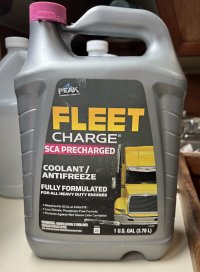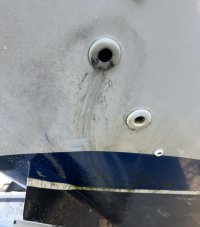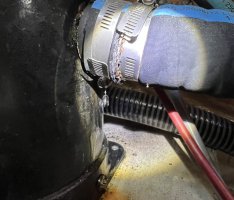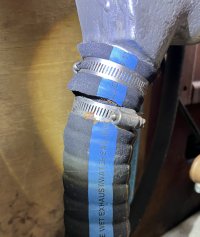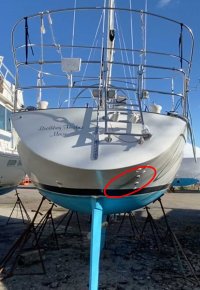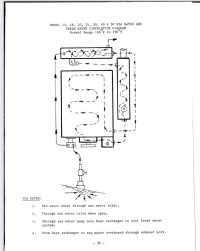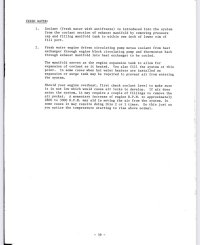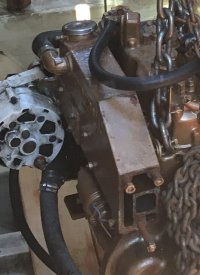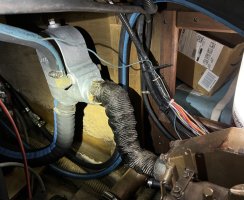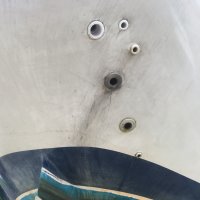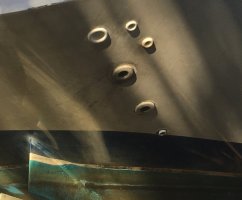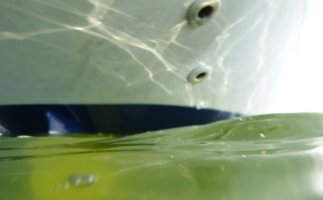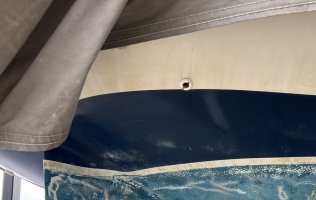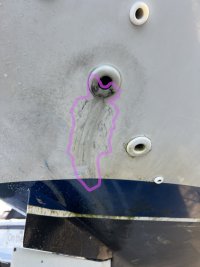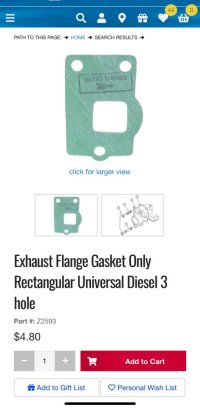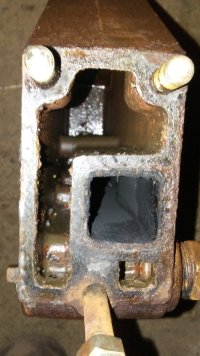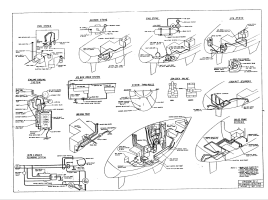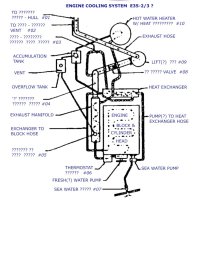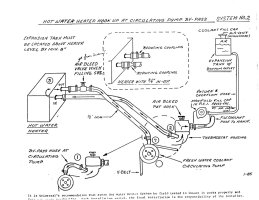Prairie Schooner
Jeff & Donna, E35-3 purchased 7/21
We've got oddly fluctuating coolant levels and composition and I can't figure out what's going on.
The coolant level will be quite low sometimes. The only time the level drops is when the engine runs, but it isn't uniform. Sometimes the level will be fine even after running for 30-60 minutes. I refill with 50/50 coolant/water mix but the other odd thing is the coolant will be considerably watered down.
This seems to have started when we had an overheated engine event. I'd cleaned the raw water filter but forgot to re-open the seacock. About a half hour into a motor transit we noticed steam coming out of the lazarette and shut the engine down immediately. I had a laser thermometer and checked parts of the engine. Temps were as high as 220ºF. I took everything out of the lazarette, removed the two engine panels in the saloon, and let it cool off. Another thing I did, thinking the water heater was over heated, was to run the hot water tap in the galley to cycle cooler water through that. There was no liquid visible when I looked in the manifold coolant reservoir. After it cooled down (and I replaced the damaged impeller) I added more 50/50 coolant. We continued the cruise though I had to add coolant periodically. I could still see some liquid in the manifold reservoir, but it would definitely be lower.
I checked the oil dipstick and there was no sign of water/coolant. The oil level did not fluctuate. I changed the oil today and confirmed that it was just (dirty) oil.
There doesn't seem to be extra liquid in the bilge after running the engine. The bilge water that is there doesn't appear red or coolant-slimy.
I tasted the watered-down coolant in the reservoir and didn't detect salt, but I don't have especially sensitive taste buds. It did have a bitter soapy taste.
The only thing that occurs to me is there could be a breach in the water heater or heat exchanger. I observed these while the engine was running today and didn't see any drips. There is no aftertaste to the water coming out of the galley or head taps. However, since the 'event' it does seem like these spit more air with water than they used to. I haven't been able to get at the exhaust outlet to see if there's a 'coolantally' residue on the hull.
The water heater is an Isotemp 16L (4.2 gal) Thin that the POs installed in 2015. The heat exchanger is original to the boat. I did a Barnacle Buster treatment on it at the beginning of this season. The raw and coolant sides of it seemed isolated from each other.
I did discover cracks in the exhaust hose from the exhaust riser to the muffler, where they are clamped to each device. There was a slow but steady drip from those while the engine was running. But if I understand the system correctly, those aren't part of the coolant loop.
Have any of you had a similar experience? What could it be? What is some other evidence I can be looking for?
Thanks much,
Jeff
The coolant level will be quite low sometimes. The only time the level drops is when the engine runs, but it isn't uniform. Sometimes the level will be fine even after running for 30-60 minutes. I refill with 50/50 coolant/water mix but the other odd thing is the coolant will be considerably watered down.
This seems to have started when we had an overheated engine event. I'd cleaned the raw water filter but forgot to re-open the seacock. About a half hour into a motor transit we noticed steam coming out of the lazarette and shut the engine down immediately. I had a laser thermometer and checked parts of the engine. Temps were as high as 220ºF. I took everything out of the lazarette, removed the two engine panels in the saloon, and let it cool off. Another thing I did, thinking the water heater was over heated, was to run the hot water tap in the galley to cycle cooler water through that. There was no liquid visible when I looked in the manifold coolant reservoir. After it cooled down (and I replaced the damaged impeller) I added more 50/50 coolant. We continued the cruise though I had to add coolant periodically. I could still see some liquid in the manifold reservoir, but it would definitely be lower.
I checked the oil dipstick and there was no sign of water/coolant. The oil level did not fluctuate. I changed the oil today and confirmed that it was just (dirty) oil.
There doesn't seem to be extra liquid in the bilge after running the engine. The bilge water that is there doesn't appear red or coolant-slimy.
I tasted the watered-down coolant in the reservoir and didn't detect salt, but I don't have especially sensitive taste buds. It did have a bitter soapy taste.
The only thing that occurs to me is there could be a breach in the water heater or heat exchanger. I observed these while the engine was running today and didn't see any drips. There is no aftertaste to the water coming out of the galley or head taps. However, since the 'event' it does seem like these spit more air with water than they used to. I haven't been able to get at the exhaust outlet to see if there's a 'coolantally' residue on the hull.
The water heater is an Isotemp 16L (4.2 gal) Thin that the POs installed in 2015. The heat exchanger is original to the boat. I did a Barnacle Buster treatment on it at the beginning of this season. The raw and coolant sides of it seemed isolated from each other.
I did discover cracks in the exhaust hose from the exhaust riser to the muffler, where they are clamped to each device. There was a slow but steady drip from those while the engine was running. But if I understand the system correctly, those aren't part of the coolant loop.
Have any of you had a similar experience? What could it be? What is some other evidence I can be looking for?
Thanks much,
Jeff

